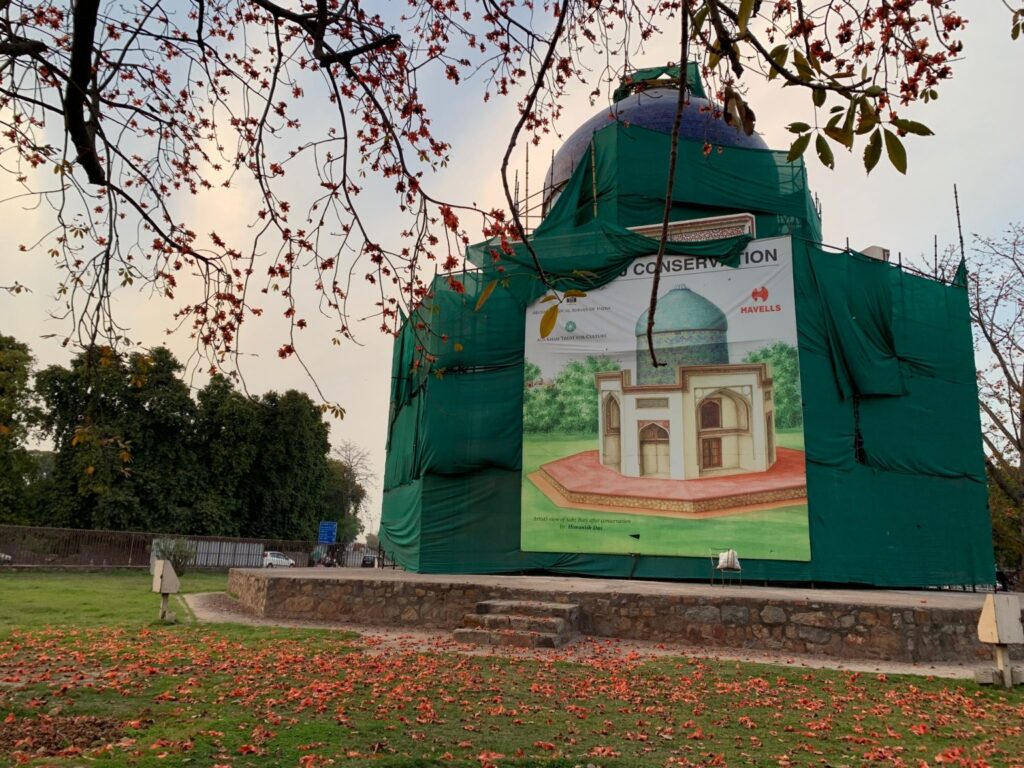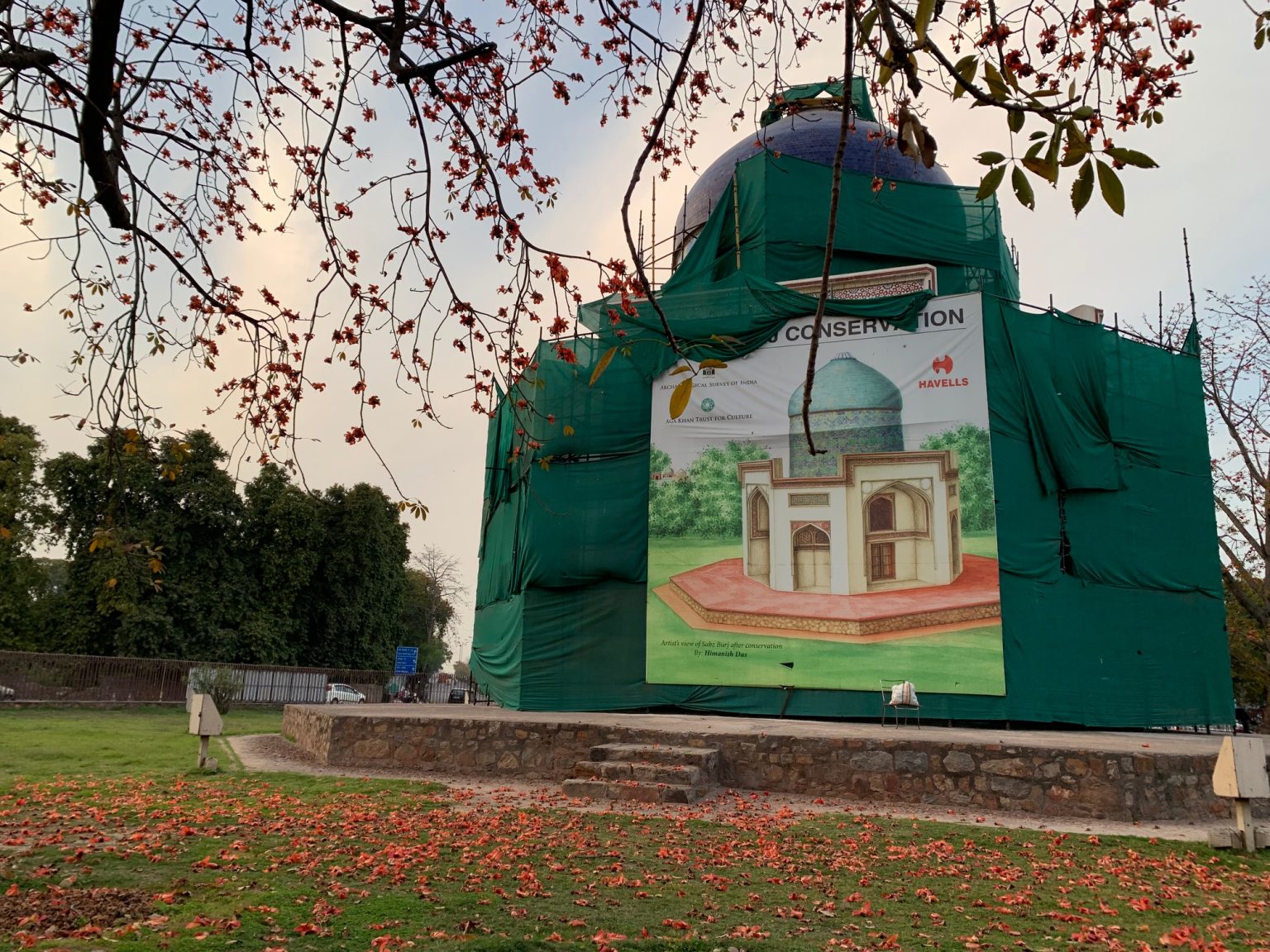Situated prominently on the Nizamuddin round about on Mathura Road, Sabz Burj has an ironic air of isolation and decrepitude. Standing in the public eye for centuries, the monument had fallen into ruins due to neglect and vandalism. However, the 22-metre high structure is off to a new start this month.

In 2018, Aga Khan Trust for Culture along with the Archaeological Survey of India undertook the the restoration of the monument, a recovery of its lost splendour. The monument had fallen into ruins owing to pollution, traffic and accompanying vibrations that come as a disadvantage of its location.
The tomb dates back to somewhere between 1530 and 1540 A.D. The painting on the ceiling highlights an influence of Jahangir’s rule, but the tomb was built much before that. Many questions remain unanswered – who built the tomb, where is the grave? It lies in the vicinity of Nizamuddin Dargah, so it is safe to presume that the nobleman buried here must have been important. In the early 1900s, the Nizamuddin police station was being operated out of this very structure.
Inappropriate restoration attempts undertaken in the 1980s used chemicals and cement, and replaced the fallen tiles of the dome with blue colored tiles. Many locals therefore refer to the structure as ‘Neela Gumbad’, while the ‘sabz’ (green) in its name remains nowhere to be seen. The structure lies in the buffer zone of Humayun’s tomb. Built in Timurid-style Mughal Architecture, it is also one of the earliest examples of double-domed tombs in the country.

The restoration was aimed at stabilising the foundation and fixing cracks on the dome, among other things. The restoration work done in the 20th century was carefully removed to reveal a ceiling painted in florals. The tomb is also expected to be illuminated by Havells India Limited, which has joined hands with AKTC.




